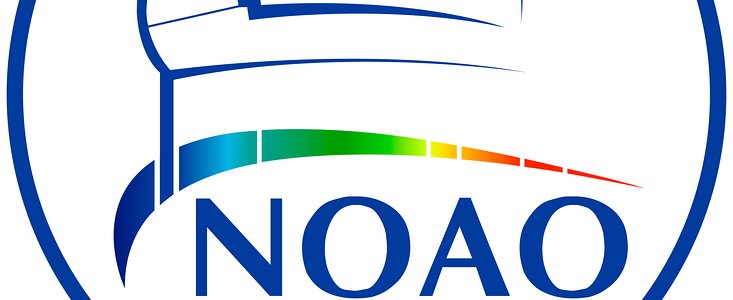NOAO Forms Partnership With NSF High Technology Optics Center
30 July 1999
The National Optical Astronomy Observatories (NOAO) is a partner in a multi-institutional center involved in the rapidly developing field of adaptive optics, which promises to revolutionize astronomy and vision science.
The National Science Foundation's governing body, the National Science Board, has approved a proposal to establish a Center for Adaptive Optics at the University of California, Santa Cruz.
Adaptive optics (AO) is a method to actively compensate for changing distortions that cause blurring of images. It is used in astronomy to correct for the blurring effect of turbulence in the earth's atmosphere and can give ground-based telescopes the same clarity of vision that space telescopes achieve by orbiting above Earth's atmosphere. The same technology has the potential for use in the diagnosis of retinal disease.
In the practice of AO, a telescope monitors the distortion of light from a bright star or artificial laser source, and then uses sophisticated computer techniques to bend the telescope mirror hundreds of times per second to compensate for the distortion.
"In astronomy, our needs are for increasingly complex and sophisticated systems, whereas in vision science, the emphasis is likely to be on miniaturization and creating more human-friendly systems for use in health care," said Jerry Nelson, director of the Center for Adaptive Optics and professor of astronomy and astrophysics at UCSC.
Pioneering work in AO is being done by Dr. Thomas Rimmele, an astronomer at the National Science Foundation's National Solar Observatory (NSO) at Sacramento Peak, New Mexico. Rimmele has developed reliable AO technology that takes 800 frames/second of the solar surface pattern to map out and remove atmospheric distortions. Hot gases bubbling to the solar surface produce the pattern which astronomers refer to as solar granulation.
Techniques developed by Rimmele can be used in both solar and nighttime astronomy. Rimmele's work is particularly significant since he is working in visible light, not infrared, where the shorter wavelengths make the process more challenging. These techniques developed at NSO are for use on extended objects with low contrast surface features, conditions common to the solar surface and human retina. Nighttime astronomy uses a single bright source to map distortions.
Analyzing adaptively-corrected images will require new sophisticated computer programs. NOAO scientists and programmers will work with their colleagues at CfAO to develop and disseminate this complex software to the community. This is a natural role for NOAO, the developer and maintainer of IRAF, the most broadly distributed astronomical data analysis software available. IRAF is is used by more than 5000 astronomers at 1500 sites around the world.
Notes
NOAO is a partner in the multi-institutional Center for Adaptive Optics (CfAO), which will coordinate the efforts of researchers across the country involved in the rapidly developing field of adaptive optics (AO). AO is a method to actively compensate for distortions that cause blurring of images. AO has the potential to revolutionize both astronomy and vision science.
The National Solar Observatory is one of four division of the National Optical Astronomy Observatories (NOAO). NOAO is operated by the Association of Universities for Research in Astronomy, Inc. under cooperative agreement with the National Science Foundation.
Links
- The Adaptive Optics Project at NSO/Sac Peak is described at these web sites:
- http://www.noao.edu/noao/noaonews/mar99/node37.html
- http://www.sunspot.noao.edu/AOWEB/
- For more information about the NSF Science and Technology Centers go to URL
- http://www.nsf.gov/od/lpa/news/press/99/pr9945.htm
- Related press releases can be found at
- University of Chicago:
http://www-news.uchicago.edu/releases/99/990729.adaptiveoptics.shtml - University of California, Santa Cruz:http://www.ucsc.edu/news_events/press_releases/
Image Captions: The Center for Adaptive Optics (CfAO) Logo
Contacts
Dr. Stephen Strom
NOAO Astronomer
Tel: (520) 318-8322
Email: sstrom@noao.edu
Dr. Steve Keil
Director, National Solar Observatory
Tel: (703) 306-1070
Email: aljones@nsf.gov
Suzanne Jacoby
NOAO Press Officer
Tel: (520) 318-8364
Email: sjacoby@noao.edu


